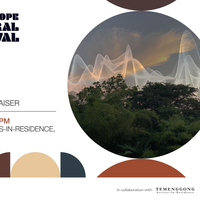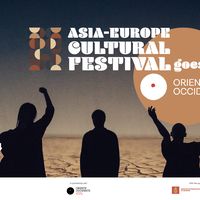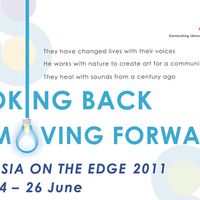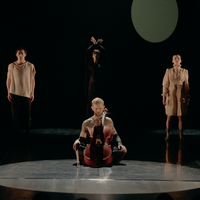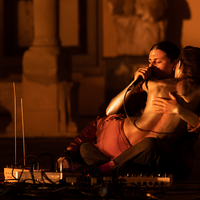Asia-Europe Cultural Festival: 2024 | Interview with the artists of BRIDGE
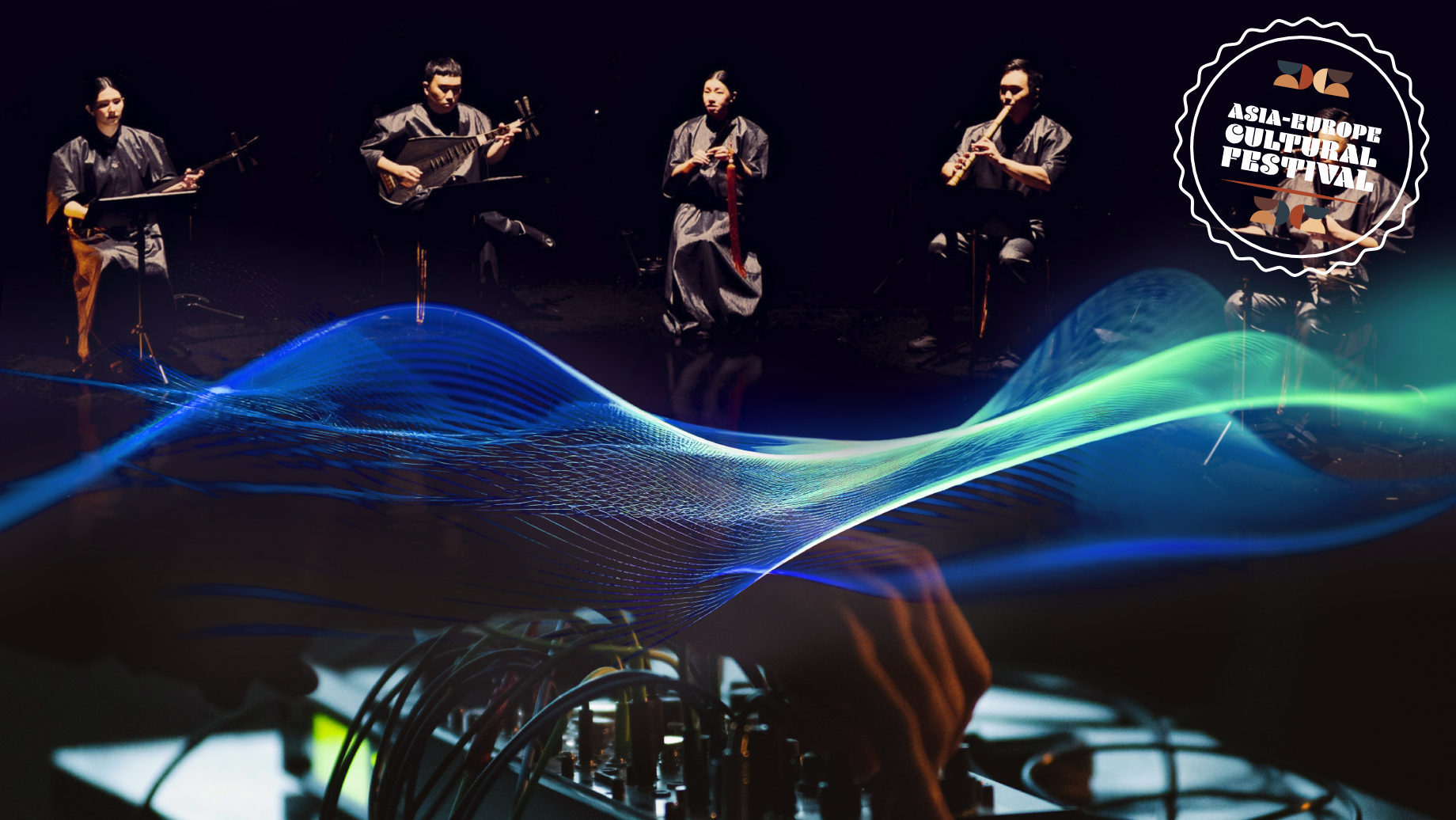
The Asia-Europe Cultural Festival is a public arts festival that celebrates the artistic diversity of Asia and Europe and promotes dialogue and exchange amongst artists from the 2 regions. In 2024, the Festival makes its debut in Italy, collaborating with local dance festival Oriente Occidente from 30 August to 7 September.
We speak with representatives from Siong Leng Musical Association, based in Singapore; and Tempo Reale, based in Florence, Italy. In the framework of this year’s festival, the two groups will be coming together to perform BRIDGE, a cross-cultural musical collaboration developed thanks to a 6 months hybrid residency programme.
1. In your own words, please introduce your group’s work and the aims of your respective artistic practices.
Simone Faraci of Tempo Reale: Founded by Luciano Berio in 1987, Tempo Reale explores electronic music and sound arts through a unique blend of technological expertise, creativity, and rigorous performance and teaching. One of the practices that has deeply permeated our activity is electroacoustic improvisation, through which we aim to innovate and expand the boundaries of sound and music, creating transformative artistic experiences.
Seow Ming Xian of Siong Leng: Siong Leng is a prominent figure in the world of traditional Nanyin music, an ancient Chinese musical art form that dates back over a thousand years. Our work primarily focuses on preserving and revitalizing this cultural heritage, characterized by its lyrical melodies and intricate rhythms. Through our productions, compositions, and teaching, we aim to keep Nanyin music relevant in contemporary society while maintaining its historical integrity.
In our artistic practice, we explore the intersections between tradition and innovation. By drawing inspiration from various cultural and historical sources, Siong Leng aims to create art that resonates with modern audiences while honouring the past.
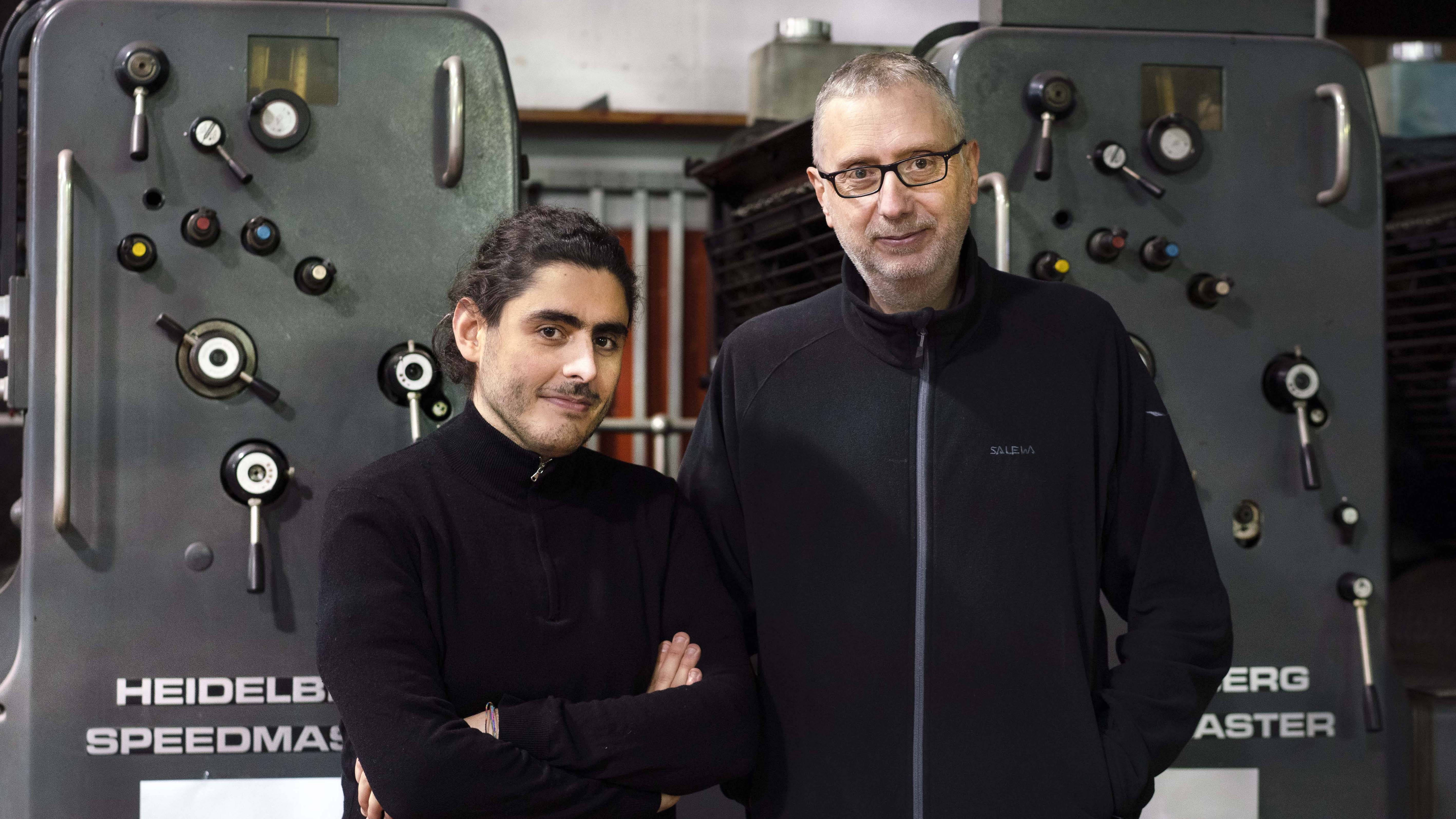 | 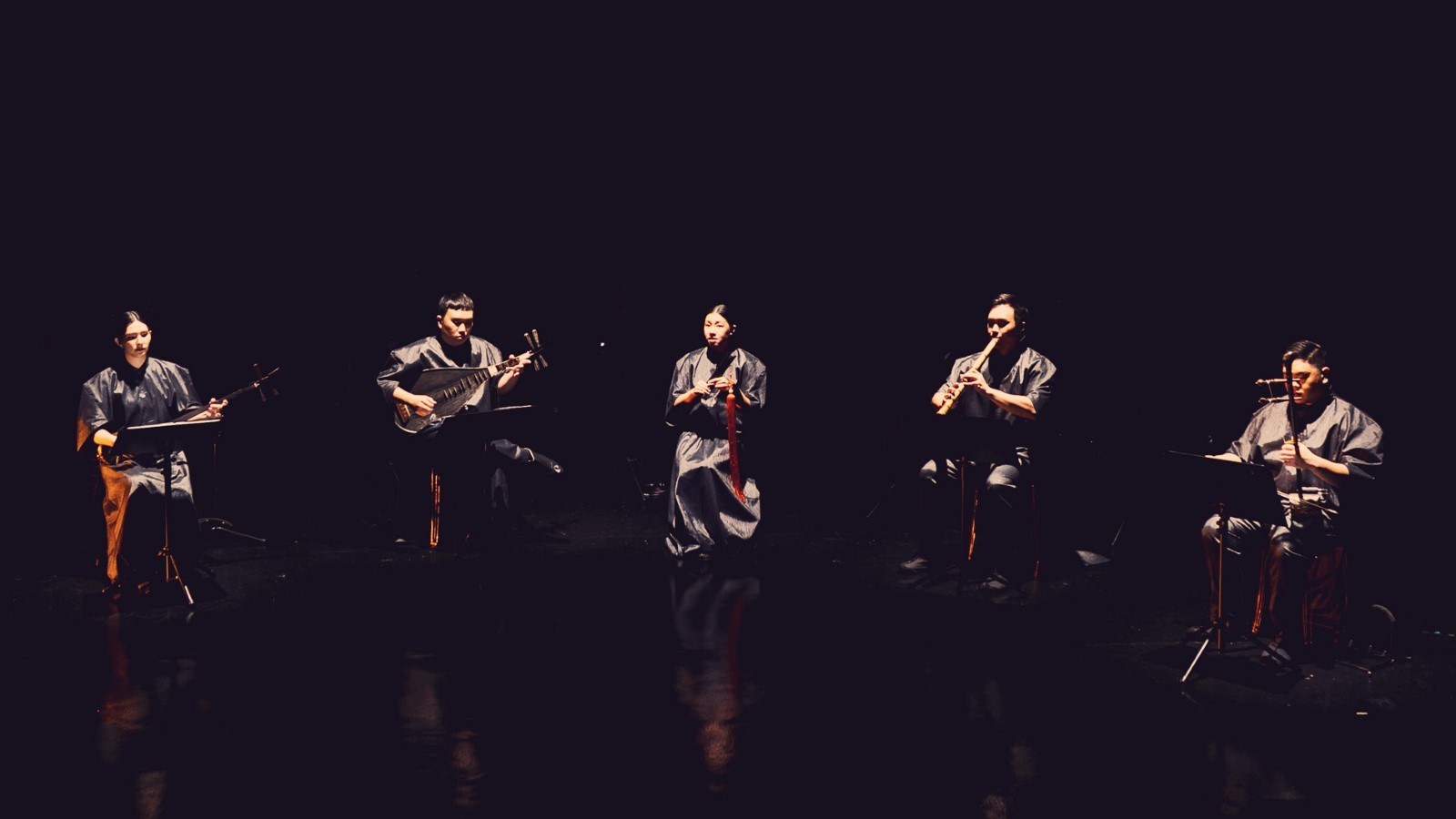 |
Tempo Reale | Siong Leng Musical Association |
2. BRIDGE represents a ground-breaking collaboration in the field of music, bringing together such contrasting genres into one performance. Have you embarked on an intercultural partnership before, and if so, what have your previous experiences been like and how have they shaped your approach to this project?
Simone: Tempo Reale has extensive experience collaborating with international musicians, including through projects like "Il Paesaggio Sonoro in cui Viviamo," which involved partners such as GMVL (France), Amici della Musica di Cagliari (Italy), AFEA/Festival DEM (Portugal), and EPHMEE (Greece). However, the geographical and musical distances in BRIDGE were unprecedented. This collaboration with Siong Leng's traditional Chinese music required a new level of cross-cultural engagement. Our extensive experience in improvisation and working with diverse groups from classical to jazz backgrounds was particularly valuable. This expertise helped to bridge the gap and facilitated a seamless integration of different musical traditions, creating a unique and harmonious exchange.
Ming Xian: I've had the privilege of engaging in several intercultural partnerships, and these experiences have been incredibly enriching and transformative for me. Collaborating with artists from diverse cultural backgrounds has broadened my understanding of different artistic traditions and practices, offering me fresh perspectives on Nanyin music. Some memorable collaborations include ‘The Origins Cipher’ in which we collaborated with musicians from Jeju, Korea; and when we partnered with Gendang Akustika, a Singapore Malay folk ensemble practicing Asli music.
These collaborations have deeply influenced Siong Leng’s approach to projects, reinforcing the value of cultural exchange and collaboration. They've shown us the potential in integrating new influences while preserving the authenticity of traditional art forms. Balancing tradition with innovation is central to our artistic vision, driving our commitment to creating dynamic and innovative work.

The Origins Cipher by Siong Leng Musical Association in collaboration with Esplanade Singapore, 2023
3. Talking about music and creative processes, how has this collaboration with each other changed your perspective?
Simone: This collaboration required us to engage in a deep exchange about our respective musical practices, both in the preparatory phase and during the residency in Singapore. But once we started playing, it didn't take long to find common ground. The musicians of Siong Leng are extraordinary professionals and masters of their instruments, which allowed us to communicate spontaneously in improvisation, once we had established clear boundaries within which to move. It was exciting to discover how easy it can be for such diverse groups to play together when there is curiosity and trust in each other.
Ming Xian: Working with Tempo Reale has deepened my understanding of the creative process. It's been a journey of experimentation and discovery, challenging me to explore new sonic landscapes and rethink the boundaries of Nanyin music.
One of the most profound changes in my perspective has been the understanding of how traditional Nanyin music can be reinterpreted and revitalized through modern technology. Tempo Reale's innovative approach to sound manipulation and electronic music has shown me that tradition and technology are not mutually exclusive. Instead, they can complement each other to create something truly unique and contemporary while respecting the historical roots of the music
Moreover, our partnership has emphasized music's universal language and its ability to transcend cultural and stylistic differences. By blending Nanyin's ancient melodies and rhythms with cutting-edge electronic techniques, we've created a fusion that resonates with diverse audiences. This collaboration has reinforced my belief in the power of artistic collaboration to promote mutual respect, understanding, and innovation.
Musicians rehearsal for preview performance in Singapore, 2024
4. To Kang Kee (Artistic Director of Siong Leng): Nanyin and electronic music derive from distant artistic methods. Can you share some of the ways you’ve explored merging the two very different genres of music into the final performance that will take place in September? What shared artistic direction are you taking?
Integrating Nanyin traditional music with electronic music was a fascinating journey of creativity and discovery. Embracing fresh ideas and fostering an environment where musicians from both genres could freely explore and experiment was crucial to the success of this collaboration.
For me, the process began with a deep dive into the essence of sound itself, examining fundamental elements like dynamics, pitch, rhythm, and tone. By establishing a framework based on these core components for further improvisations, we could craft a unique musical flow that seamlessly blended the old with the new.
This approach opened the door to innovative concepts, such as weaving electronic textures between traditional melodic lines or emulating electronic sounds using classical instruments. Through improvisation and the collective creativity of our talented musicians, these ideas came to life in ways that were both surprising and exhilarating.
The openness and skill of the musicians from both organizations were truly inspiring. Not only did we create captivating music, but we also forged strong bonds of friendship, united by our shared passion for sound and music.
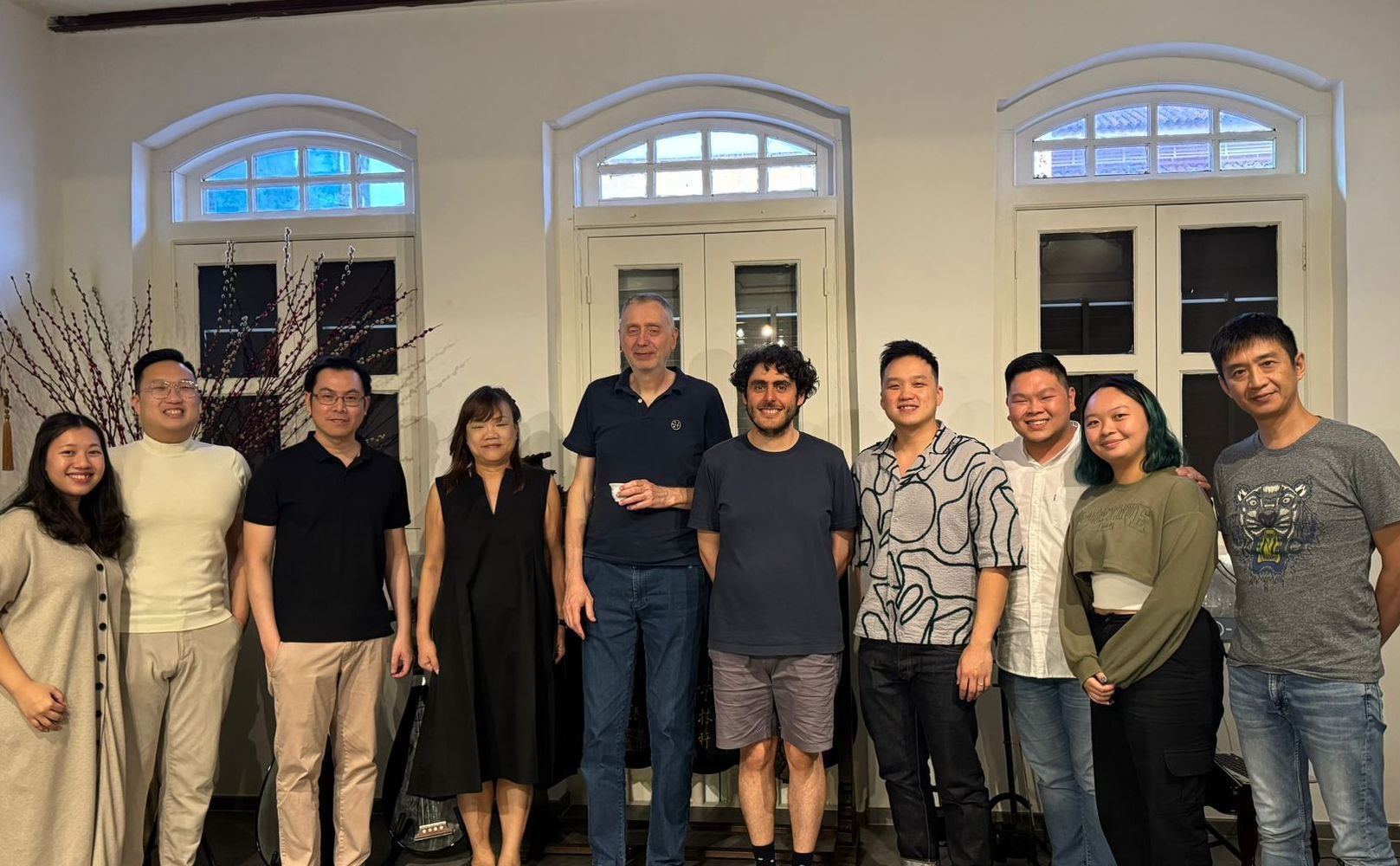
Group photo of artists in Singapore, 2024
5. To Simone: Your practice as a musician is heavily based on improvisation, drawing on both physical and cultural memory to create music extemporaneously; could you elaborate on what kind of memories you drew on for this uniquely cross-cultural collaboration?
This is a very interesting question. Of course, every country has its stereotypical image of other countries’ music, and I aimed to avoid falling into such clichés. Instead, I opted for a more comparative approach, delving into my own memory to find connections with Nanyin music. What resonated with me immediately was the relationship this music has with silence and the sense of anticipation that accompanies it. As a musician, I have explored this theme extensively, and it was this shared exploration of silence that proved to be the key to this unique musical encounter.
Tempo Reale at the preview performance of BRIDGE in Singapore, 2024
6. To Lim Ming Yi (A Principal Musician of Siong Leng): As a seasoned Nanyin musician, how has this experience been for you given the stark contrast between the improvised music of your collaborators and the typical adherence to pre-composed music in Nanyin?
Collaborating with improvisational artists has been both challenging and exhilarating. Nanyin, deeply rooted in tradition, emphasizes adherence to pre-composed music passed down through generations. This collaboration contrasted sharply with my structured practice, requiring me to embrace spontaneity and flexibility.
Learning to improvise demanded a different kind of attentiveness and trust in my instincts. Stepping away from Nanyin's familiar structures was initially daunting but ultimately rewarding, allowing me to explore new dimensions of my musicality.
Working with improvisers expanded my musical expression, revealing the freedom and creativity it brings. It taught me the value of balancing structure with spontaneity, tradition with innovation.
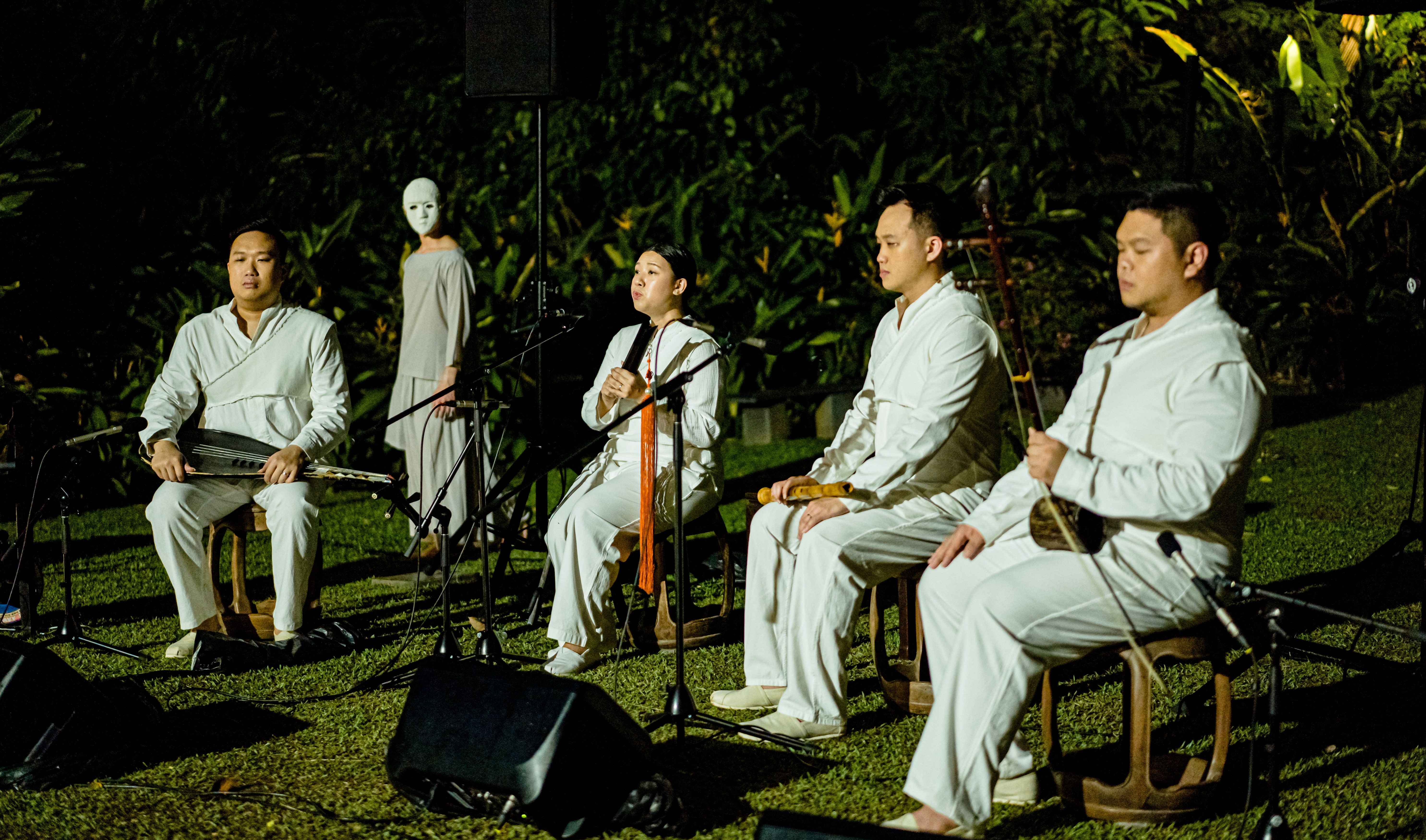
Siong Leng Musical Association at the preview performance of BRIDGE in Singapore, 2024
7. With Tempo Reale bringing in its unique electronic sound art and Siong Leng contributing the melodies of traditional Chinese music, BRIDGE represents a ground-breaking collaboration in the field of music. Now that you’re more than halfway through your 6 months of working with each other, can you share some insights on the significance of cross-cultural and cross-genre collaboration to your artform?
Simone: Electronic music and improvisation have always thrived on such encounters. On one hand, electronic music seeks to explore the essence of sound and is constantly searching for unknown sonic territories. On the other hand, improvisation—especially radical improvisation—aims to create new musical languages. The meeting of individuals from diverse cultural backgrounds naturally sparks the desire to develop a new, unique musical language that facilitates genuine communication. In our collaboration, this fusion of electronic sound art with traditional Chinese melodies has been instrumental in creating a novel musical vocabulary, enriching our understanding of sound and musical interplay.
Ming Xian: The collaboration has been truly transformative. As we are nearing the end of our six-month residency programme, it's clear that cross-cultural and cross-genre collaboration has profoundly impacted our artform.
Our collaboration has emphasized the importance of adaptability and open-mindedness in the creative process. Stepping out of our comfort zones and embracing unfamiliar techniques has led to unexpected artistic outcomes, showing that true innovation thrives at the intersection of diverse ideas.
Despite our diverse cultural backgrounds, our shared passion for artistic expression has bridged gaps and deepened our respect for each other's traditions. This partnership demonstrates how music can transcend cultural boundaries, fostering meaningful connections.
Overall, cross-cultural and cross-genre collaboration enriches the global dialogue on music's evolution by fostering innovation, mutual respect and deeper connections between diverse traditions. BRIDGE marks a significant milestone in our creative journey, inspiring us to continue exploring new collaborations and pushing creative boundaries.
-min.JPG)
Musician's group photo at the preview performance of BRIDGE in Singapore, 2024
8. Upon reflection of this experience with cross-cultural collaboration, what do you think are some ways in which the exposure to a diversity of cultures and art forms will influence your future projects?
Simone: This experience has profoundly enriched us both musically and personally. It would be extraordinary to have such experiences more often. Nanyin music is truly a treasure, and although it is inevitably filtered through our Western perspective, it has become a part of us. It will undoubtedly resurface in our compositions and improvisations, influencing our future projects in unique and meaningful ways.
Ming Xian: Engaging with Tempo Reale's electronic sound art has demonstrated how modern technology can enhance the expressive potential of traditional music. Moving forward, I am Siong Leng is eager to explore digital tools further, aiming to integrate electronic elements that create new textures and atmospheres within our compositions and performances.
The cross-cultural dimension of our partnership has deepened our appreciation for music's universal language. This understanding inspires us to develop projects that evoke emotional and intellectual connections across cultural boundaries, fostering a deeper appreciation for our shared human experience.
Additionally, this collaboration has underscored the value of working collectively with artists from diverse backgrounds. It has been a powerful reminder of the creative possibilities that emerge from collaborative efforts. In our upcoming projects, we intend to actively seek out interdisciplinary collaborations, extending beyond music to include dance, visual arts, and theatre.
We aim to create pieces that evoke emotional and intellectual connections across cultural boundaries, fostering a deeper appreciation for our shared human experience.
Siong Leng Musical Association and Tempo Reale will come together for the final performance of BRIDGE on 1 September 2024, 6:30pm at the Mart - Museum of Modern and Contemporary Art, Rovereto, Italy, as part of the Asia-Europe Cultural Festival 2024.
Click HERE or scan the QR below to book your tickets today!

Concept: Siong Leng and Tempo Reale Electroacoustic Ensemble
Live music: Lim Ming Yi, Seow Ming Fong, Seow Ming Xian, Joel Chia
Live electronics: Francesco Giomi and Simone Faraci
Sound projection: Giovanni Magaglio
In collaboration with: Museum of Modern and Contemporary Art of Trento and Rovereto (Mart), Tempo Reale and Siong Leng Musical Association
Residency supported by: Temenggong Artists-In-Residence
Supported by: National Arts Council, Singapore
The event is part of the Asia-Europe Cultural Festival 2024, organised by ASEF in partnership with Oriente Occidente with the financial support of the European Union.
For the full programme, CLICK HERE.
Similar content
from - to
01 Sep 2024 - 01 Sep 2024
from - to
21 Jun 2024 - 21 Jun 2024
from - to
30 Aug 2024 - 07 Sep 2024
from - to
24 Jun 2011 - 26 Jun 2011
By Kerrine Goh
25 Sep 2023
By Kerrine Goh
09 Oct 2023




